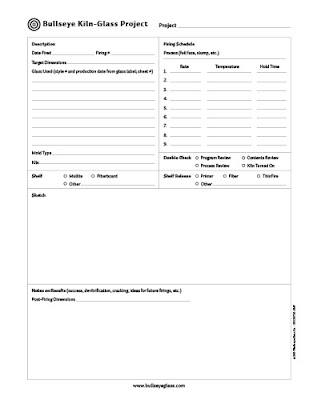Not all
enamels are equal
Enamel paints
This
description refers to a paint that air dries (or with minimal heat) to a hard
finish (usually gloss). Most commercially available enamel paints are
significantly softer than either vitreous enamel or heat cured synthetic
resins. The term "enamel paint" generally is used to describe
oil-based covering products, usually with a significant gloss finish. Many
latex or water-based paints have adopted the term.
Enamel
paint has come to mean a "hard surfaced paint" and usually is in
reference to paint brands of higher quality, floor coatings of a high gloss
finish. Most enamel paints are alkyd resin based. Some enamel paints have been
made by adding varnish to oil-based paint. Enamels paint can also refer to nitro-cellulose based paints. Nitro-cellulose enamels are also commonly
known as modern lacquers. These have
been largely replaced by synthetic coatings like alkyd, acrylic and vinyl.
More information at: https://en.wikipedia.org/wiki/Enamel_paint
Enamel
paints are used for coating surfaces that are outdoors or otherwise subject to
hard wear, or variations in temperature.
A widespread application is in paints for cars. It is also used
frequently to decorate or label bottles due to the low curing temperatures of
some formulations.
Vitreous
enamels
Vitreous enamels are used in a variety of
circumstances. Metal signs are most
frequently enamel coated; they are used in ceramics as over glazes; and they are used on glass in many
circumstances.
Vitreous
Enamel is simply a thin layer of glass fused at high temperature on to the
surface of a metal or glass. Vitreous Enamel can be defined as a material which
is a vitreous solid obtained by smelting or fritting a mixture of inorganic
materials. The word enamel comes from
the High German word ‘smelzan’ and from the Old French ‘esmail’.
The key
ingredient of vitreous enamel is finely ground glass frit. Colour in enamel is obtained by the addition of various minerals and metal
oxides.
Vitreous
enamel is made by smelting naturally occurring minerals, such as sand,
feldspar, borax, soda ash, and sodium fluoride at temperatures between 1200°C
and 1350°C until all the raw materials have dissolved. The molten glass
which is formed is either quenched into water or through water-cooled rollers.
This rapid cooling prevents crystallisation. The resulting frit is ground in a
rotating ball mill either to produce a water-based slurry or a powder.
At the
milling stage, other minerals are added to give the properties and colour
required of the final enamel. Different enamel colours can be mixed to make a
new colour, in the manner of paint. Enamel can be transparent, opaque or
opalescent.
More information at:
Metal
enamelling
Modern frit
for enamelling steel is typically an alkali borosilicate glass with a thermal
expansion and glass temperature suitable for coating steel and other metals.
Raw materials are smelted together between 1,150 and 1,450°C (2,100 and 2,650°F)
into a liquid glass that is directed out of the furnace and thermal shocked
with either water or steel rollers into frit. Vitreous enamel is often applied
as a powder or paste and then fired at high temperature. This process gives
vitreous enamel its unique combination of properties. The smooth glass-like
surface is hard; it is scratch, chemical and fire resistant. It is easy to
clean and hygienic. It all started 3500
years ago in Cyprus. Since 1500 BC, enamelling has been a durable, attractive
and reliable material.
More information at:
Enamels
in Ceramics
Overglaze
decoration, overglaze enamelling or on-glaze decoration are all names for the
method of decorating pottery, where the coloured decoration is
applied on top of the already fired and glazed surface, and then fixed in a second
firing at a relatively low temperature. The
colours fuse on to the glaze, so the decoration becomes durable. This
decorative firing is usually done at a lower temperature which allows for a
varied and vivid palette of
colours, using
pigments which will not colour correctly at the high temperature necessary to
fire the clay body.
More information at: https://en.wikipedia.org/wiki/Overglaze_decoration
Glass Enamels
Glass
enamels are produced in the same way as enamels for metals and ceramics. The frit characteristics are adjusted for
various applications and temperatures.
This combination of finely ground frit and metals for colouring are
often combined with a binder or carrier medium.
It is similar to vitreous enamel on metal surfaces, but the supporting
surface is glass. It is also close to "enamelled" overglaze decoration on pottery, especially on porcelain, and it is thought likely that the
technique passed from metal to glass (probably in the Islamic world), and then
in the Renaissance from glass to pottery (perhaps in Bohemia or Germany).
Glass may
be enamelled by sprinkling a loose powder on a flat surface, painting or printing
a slurry, or painting or stamping a binder and then sprinkling it with powder,
which will adhere. The powdered frit can
be in the ceramic on-glaze composition suitable for fusing or casting
temperatures, or it can be adjusted for slumping temperatures as in the
traditional glass stainers’ enamels. It can produce brilliant and long-lasting
colours, and be transparent, translucent or opaque. Generally, the desired
colours only appear when the piece is fired, adding to the artist's
difficulties.
More information at: https://en.wikipedia.org/wiki/Enamelled_glass
The term
enamel is applied to a wide variety of coating materials. The range of usage is indicated, and the manufacture
and applications of vitreous enamels is indicated. The term enamel is not properly applied to
finely ground coloured glass in a medium.










